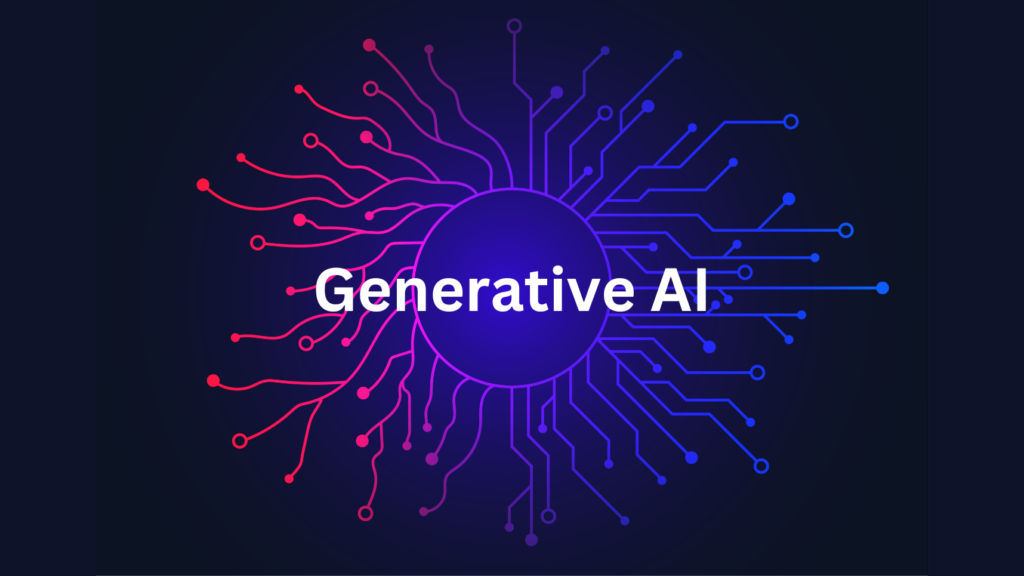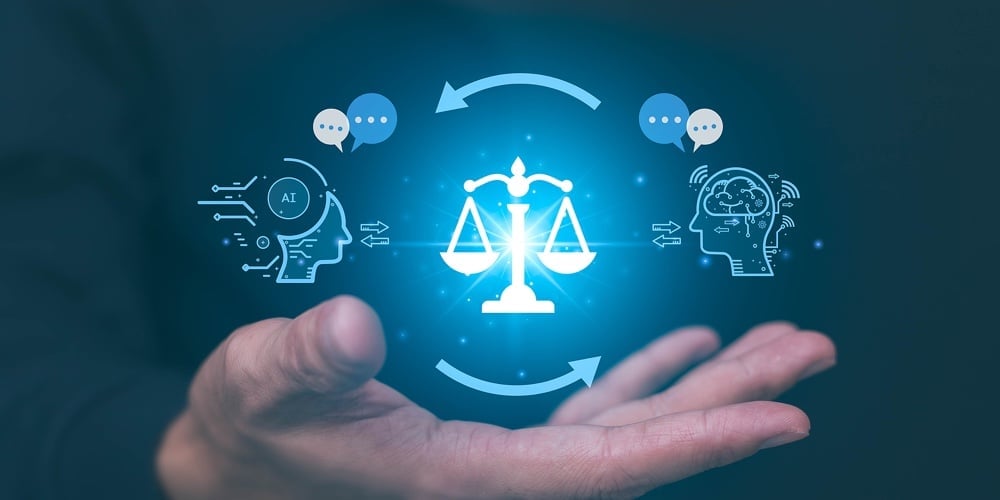Generative AI has come a long way since it lived in labs 10 years ago, transformed into an engine of innovation for the world’s major industries. Generative AI in 2025: Revolutionizing Creativity, Getting to the Point, Solutions to Difficult Problems This blog discusses the current landscape of generative AI, its emergent trends, and challenges, as well as massive opportunity it creates for the future.

What is Generative AI?
Generative AI is an artificial intelligence paradigm that can generate new content, get that content including text, images, videos, music, and data structures, through the learning of patterns and structures. In contrast to traditional AI models, which typically generate classification or prediction tasks, generative AI can create new and unique content — which can, at times, prove indistinguishable from human-crafted outputs.
Generative AI is based on adverse models such as Generative Adversarial Networks and (GANs), Variational Autoencoders (VAEs) and Transformer- based architectures such as openAI GPT-4 and so on. These systems are trained on large datasets and require massive computational resources, making them more advanced and flexible than ever before.
Generative AI Trends in 2025
Multimodal Generative AI
In 2025, multi-modality is the trend; this means that machine learning systems use multiple modalities, such as text, images, audio, and video, making it even more powerful. Models such as OpenAI’s GPT-Vision and Google’s Imagen allow users to feed in data one way and get it out another. These capabilities include, for example, generating video from text, or producing realistic 3D objects from 2D sketches.
Hyper-Personalization
It is being credited for hyper-personalizing experiences across multiple sectors, including e-commerce, entertainment, and education. With the ability of AI models to create customized recommendations, generate products, and even develop personalized learning materials, user interaction is poised for change.
Low-Code and No-Code Platforms
The advent of generative AI has made building apps and tools more accessible than ever. AI-Driven Low-Code and No-Code Software Development: These platforms allowing those with even no coding knowledge to develop software, websites, and even sophisticated algorithms using GUI interfaces and natural language commands.
Ethical and Explainable AI
With the increase of generative AI, there is a growing emphasis on developing the AI systems to be ethical and transparent. Now, in response to concerns over how AI is often considered a black box, developers are adding explanations features to make it easier for humans to understand how the AI gets to its outputs, and what makes it tick in the first place.
AI for Creative Collaboration
Generative AI has progressed from a simple task automation tool to being a creator’s collaborator. Musicians, authors, and directors are collaborating with AI to write, compose, and film, using AI to spark their imagination and creating concepts and drafts that can take human creativity to the next level.
Applications of Generative AI
Content Creation
In sectors such as media, marketing, and entertainment, generative AI is transforming the creation of content. It enables:
- Automated article and blog writing
- Syntheses of lifelike images for coming advertisements.
- Screenwriting for films and television
Healthcare
In health care, generative AI is employed for:
- Creates synthetic medical data for research.
- Generate customized treatment plans.
- Molecular interaction simulation for drug discovery.
Education
Gen AI enhances education by:
- Creating personalized learning environments that adjust to the specific needs of each learner.
- Generates Quizzes, Lesson Plans and interactive content
- I train in data until roughly in October 2023.
Gaming and Virtual Reality
Generative AI is revolutionizing gaming and VR through:
- Game environment | Procedurally generated
- The overall aesthetics of characters, their animations, and their storylines.
- Likewise, it manages real-time customization of player experiences.
Business and Marketing
In business, generative AI, for instance, supports:
- Computer-generated marketing copy and images.
- Development of business strategies based on data.
- The creation of virtual customer assistants.
Challenges of Generative AI
Ethical Concerns
Generative AI poses major ethical issues, including:
- Can be used for deepfake and misinformation
- Examples include intellectual property theft when an AI produces copyrighted output.
- Environmental impact of training large-scale AI models
Bias and Fairness
Generative AI models can reflect the biases of the data they were trained on, resulting in:
Discriminatory outputs.
- All of the disparities include the underrepresentation of marginalized groups.
- Ensuring fairness and inclusivity as a challenge
Data Privacy
Since generative AI is built upon huge datasets, it raises concerns regarding data privacy and security. Example threat agents for Violation of Sensitivity of Information:
Data breaches.
- Violations of user privacy.
- Organizations also face legal and reputational risks.
Accessibility
Generative AI is powerful, but its adoption faces:
- High computational costs.
- The availability of advanced hardware and infrastructure is limited.
- No knowledge of technology in some regions.
Regulatory Landscape
Generative AI is advancing quickly and governments and organizations have not been able to keep up. Absence of uniform regulations creates:
- Vagueness in legal accountability.
- Enforcing ethics at the same time while making AI.
- Restricted international co-operation.

Generative AI Opportunities
Market-Creating Innovations in Product Development
Generative AI accelerates prototyping and experimentation, enabling companies to:
- Create next-gen products with shorter time-to-market.
- Create simulated scenarios for enhanced decisions.
- Explore other innovative engineering problem solutions.
Enhancing Human Creativity
Generative AI automates repetitive tasks, allowing humanity to undertake higher-level creative projects. It acts as a partner in:
- Generating novel ideas.
- Extending artistic boundaries in music, art, & literature.
- 88455: Collaborating on big creative projects.
Improving Accessibility
Generative AI can:
- Give output in veraities of languages to cross language barrier.
- Create assistive technologies for disabled people.
- Make powerful tools and knowledge available to everyone.
Revolutionizing Education and Training
AI-powered simulations and virtual environments deliver:
- Developing immersive learning experiences.
- Department of Education program in real industries such as health care and aviation.
- Lifelong learning opportunities.
Driving Economic Growth
The generative AI market is forecasted to lead to impactful economic growth by:
- Job creation and new industries.
- 50% increase in productivity across sectors.
- Investments in AI-driven start-ups
The Future of Generative AI
Generative AI is also set to unlock significant possibilities for machines and humans to expand the horizons of what they might be able to accomplish together in the future. And by tackling ethical dilemmas and encouraging responsible AI deployment, we will be able to use its potency to:
- Address global challenges, like climate change and health care inequities.
- Promote cross-cultural understanding — multilingual AI systems.
- Drive innovation and creativity in a never-before-seen pace
Conclusion
As we dive into 2025, the world of technology is still being molded by generative AI. It is a landscape of opportunities and challenges — from revolutionary applications to moral quandaries. The key role for practice leaders in realizing the full potential of generative AI is to support collaboration, innovation, and responsible adoption of the technology that will lead us toward a more connected, creative, and inclusive future.
Frequently Asked Questions (FAQS)
1. What is generative AI?
Generative AI refers to systems that create new content like text, images, or videos by learning from existing datasets. Unlike traditional AI, it generates original outputs based on patterns it has learned.
2. How is generative AI used in 2025?
In 2025, generative AI is used for multimodal applications, hyper-personalization, creative collaboration, and enabling low-code/no-code platforms. It powers industries like healthcare, education, entertainment, and marketing.
3. What are the challenges of generative AI?
Key challenges include ethical concerns, bias in outputs, data privacy issues, accessibility barriers, and the lack of standardized regulations.
4. How does generative AI impact creativity?
Generative AI enhances creativity by automating repetitive tasks, suggesting novel ideas, and acting as a collaborator in artistic and design processes.
5. What are the ethical concerns of generative AI?
Ethical concerns include the misuse of AI for deepfakes, replication of copyrighted content, and its environmental impact due to high computational demands.
6. What opportunities does generative AI offer for education?
Generative AI provides personalized learning experiences, adaptive content generation, and immersive training environments, transforming education and lifelong learning.

Pingback: Unlocking Innovation: 10 Ways Generative AI is Transforming Real-World Applications Complete Guide